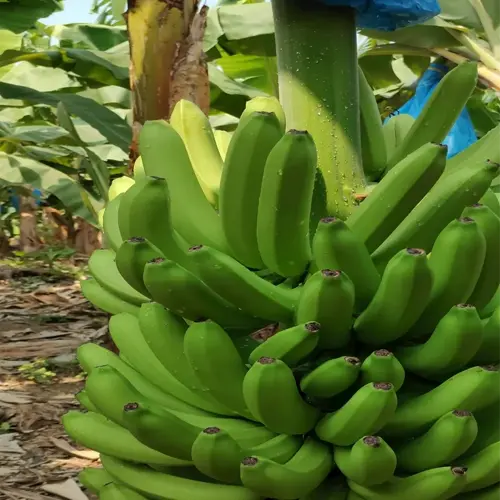How to Grow Beets: Expert Tips for Sweet Roots & Vibrant Greens

Written by
Kiana Okafor
Reviewed by
Prof. Martin Thorne, Ph.D.How to grow beets: Use loose, compost-rich soil and space them 3-4 inches apart
Plant beet seeds ½ inch deep in the soil that is 50-75°F (10-24°C)
Water 1 inch each week to prevent cracking roots and premature bolting
Thin seedlings to 3 inches apart to allow the roots to develop fully
Harvest at 1.5-3 inch diameter for peak sweetness and texture
After harvesting, store in damp sand at 32-40°F (0-4°C) for months
Article Navigation
Learning to grow beets is worthwhile because they can be consumed by both roots and leaves. The deep red roots have an earthy folate and sweetness, and the beet tops contain more iron than spinach. You can succeed with beets even as a novice gardener because they withstand cold. I've had seedlings push through my last frost of late spring without any damage.
Containers as small as 12 inches deep will suffice for growing beets, which makes them ideal for patio gardens. Once, I grew Detroit Dark Reds in fabric pots sitting on a fire escape in Chicago. In a limited space, the beets thrived, confirming that urban gardening is doable and productive. USDA zones 3-10 will work for growing beets, and you can stagger plantings to extend the harvest from the summer months to fall.
The way you prepare your soil can either make or break your beet crop.Early on in my gardening experience, I was too inexperienced to loosen the clay-heavy earth that was around my beets, as a result, I only harvested roots the size of marbles.Now, I put in immediately at least three inches of compost into my beds, which creates the friable soil texture that beets thrive on.Don't forget to test your pH, since a reading of 6.0 to 7.0 will be ideal for nutrient uptake!
Soil Preparation and Planting
Soil preparation is initiated by combining 2-3 inches of compost into the top eight inches of soil. This ratio provides the loose structure that beets require. During my initial foray into home gardening, I had compact soil, which produced roots that were oddly twisted. Now, with layering of decomposed leaves and well-aged manure, I see lush crops develop. Sandy soils require a reduced depth adjustment, in the ½-inch range of compost, and heavy clay does well with fork aeration before planting.
The soil pH in your area will guide your amendments. Once, I tested the acidic soil (5.8) of a community garden plot and added 5 pounds per 100 sq ft of pelletized lime to the soil. When working in arid zones with alkaline soils, options such as powdered sulfur dust may be called for as pH amendments to bring pH levels down. Ideally, the soil pH should be between 6.0 and 7.0 to maximize plant available nutrient uptake. I keep a soil probe handy in my tool shed to test the pH before planting each year.
Timing relies on your USDA zone. As a gardener in Zone 5, I am planting in mid-April. But in Zone 8, for example, planting times start in early to mid-February. I successfully overwintered beets in straw mulch in Zone 7. In areas with a longer growing season, stagger plantings every three weeks for continuous harvest. Seed packs are almost always misleading, and remember that multigerm clusters (like beets) usually require thinning regardless of what it says on the packet.
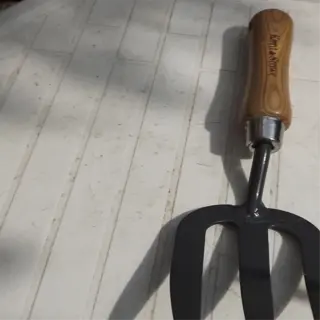
Garden Fork
- Fact: Aerates compacted clay soils up to 12 inches deep
- Tip: Choose stainless steel for durability and rust resistance
- Ideal for breaking up hardpan layers without damaging soil structure
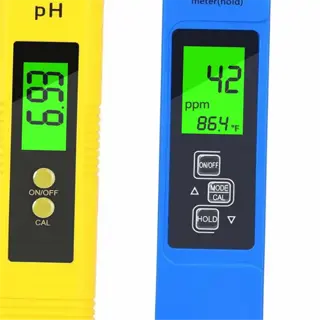
Soil pH Tester
- Fact: Measures pH between 3.5-9.0 with 0.2 accuracy
- Tip: Calibrate monthly with distilled water and buffer solutions
- Critical for adjusting lime/sulfur applications accurately
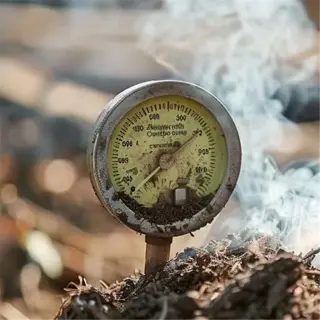
Soil Thermometer
- Fact: Ensures soil is 40-85°F (4-29°C) for beet germination
- Tip: Test at 8 AM for consistent daily readings
- Avoid planting if soil temps exceed 85°F (29°C)
Best Beet Varieties to Grow
Selection of beet varieties depends upon flavor and function. Detroit Dark Red has a traditional earthy flavor depth good for roasting, while Golden Beets deliver mild sweetness and won't stain your hands. Being in the kitchen, I have experimented and found Chioggia's candy cane slices help enhance salads, although the strong peppery flavor may surprise the first-time grower. Balance your flavors with recipes being your priority.
The ability to tolerate cold weather makes Early Wonder a go-to for early spring through late fall. I have harvested these from beds blanketed in snow in Zone 5, and the roots were still firm. For containers, Babybeat will grow to 1.5 inches and perform well in an 8-inch pot. Its tender greens surpass anything you'll find at the grocery store.
Bulls Blood and other dual-purpose types are an excellent way to maximize yield. While the roots develop, the burgundy leaves can add color to your stir-fry. Last year, I was able to harvest greens every week from just six plants, and I still got golf-ball-sized beets. As a bonus, planting bush beans as companionship means I've gotten a double helping of each crop.

Microgreen Beets
- Fact: Harvest greens at 2 inches (5 cm) for salads
- Tip: Soak seeds overnight for faster germination
- Ideal for indoor herb gardens or small spaces
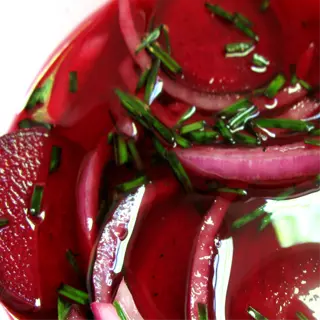
Pickled Beets
- Fact: Vinegar preserves nutrients and extends shelf life
- Tip: Use apple cider vinegar for a sweeter tang
- Perfect for preserving summer harvests
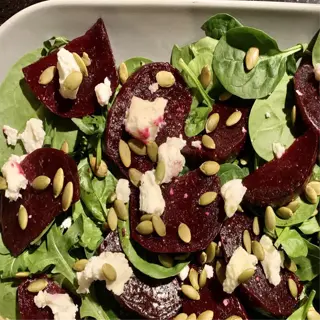
Beet Greens Salad
- Fact: Young leaves have 200% DV vitamin K per cup
- Tip: Pair with citrus dressings to balance earthiness
- Harvest leaves at 4-6 inches (10-15 cm) tall
Watering, Feeding, and Thinning
Beet watering calls for consistency. Give beets 1 inch a week, tracked with a rain gauge. Young seedlings require light moisture every day, while beets with expanding roots prefer deep watering every 3 days. I once lost a crop due to irregular watering; once roots expand, they split like cracked pottery. Drip lines keep the leaves dry so there is no wet leaf to attract pests.
You can identify boron deficiency in your plants if you notice that the root cores have turned black and the leaves have become stunted. You should mix 1 teaspoon of borax per 10 gallons of water and drench the soil with the solution every three weeks. My garden journal records this method increasing yields by 30% on sandy soil. For more sustainable results, combine this with compost.
To avoid overcrowding, make sure to thin seedlings to 3 inches apart once the greens have grown to a height of 2 inches. Avoid pulling seedlings, pinch with scissors because pulling may disturb the roots of nearby seedlings. Overcrowded beet seedlings will produce misshapen roots. Last year's thinned seedlings were utilized to make pesto, meaning you aren't wasting anything. Thinning results in roots that are sweeter and larger (think fist-sized roots).
Organic fertilizers such as fish emulsion can promote beet sweetness by providing a slower nutrient release, while synthetic 10-10-10 formulas grow much larger roots in a shorter period, given that the synthetic 10-10-10 chemical will sometimes produce diluted flavor. I like to try them side by side just to check, and when practicing roasting I do find the compost-fed beets will sometimes caramelize better. Balance your flavor versus speed priorities when growing.
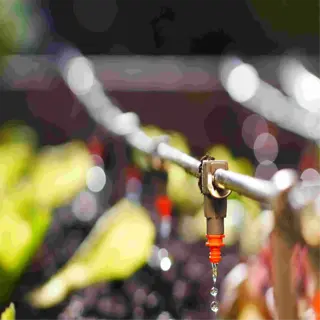
Drip Irrigation Kit
- Fact: Delivers 0.5 gallons (1.9L) per hour per emitter
- Tip: Space emitters 12 inches (30 cm) apart for even moisture
- Prevents leaf wetness that attracts pests
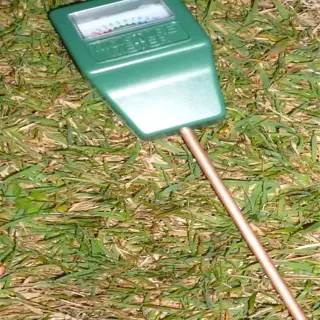
Soil Moisture Meter
- Fact: Measures 1-10 scale (3-4 ideal for beets)
- Tip: Test at root level (6 inches/15 cm deep)
- Avoids overwatering in clay soils
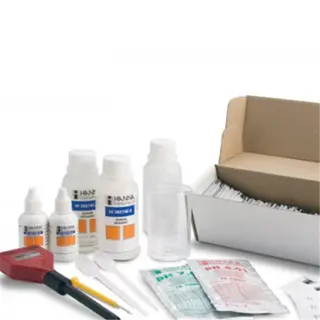
Boron Test Kit
- Fact: Detects 0.1-2.0 ppm boron levels in soil
- Tip: Test 6 weeks after planting to prevent black spots
- Critical for preventing woody roots
Harvesting and Storage
Harvesting beets at optimal flavor requires assessment of both the size of the roots and the vitality of the foliage. Harvesting should be done when the roots reach 1.5 to 3 inches in diameter before the foliage has started to yellow. I once harvested too late, and the roots turned woody and bitter. To harvest beets, you should employ a garden fork to loosen the soil and twist the greens gently so as not to bruise the shoulders.
Curing can greatly increase the storage life of roots. After washing off the soil, allow the root to dry in the shade, with warm, dry air circulation, for 2-3 hours. I cure my roots in a breezy garage on mesh screens. Curing will also harden the root skin and make it less prone to rot. Do not sun-cure, direct sunlight will soften the edible roots and also deplete the sugar content.
Root cellars are superior to refrigerators for storing beets long-term. Unwashed beets should be sandwiched in damp sand at a temperature of 32-40°F (0-4°C). My grandmother had a cellar that kept them nicely crisp until spring. If storing beets in the fridge, use perforated bags and keep the humidity high. They will be fresh for 3-4 weeks this way.
To preserve excess food, freeze it or pickle it. To freeze it, blanch the sliced roots in boiling water for 3 minutes and then freeze it. For fast pickles, combine equal parts water and vinegar, add salt, and bring it to a simmer before pouring it over the beets in the jar. I like to add dill seeds and garlic cloves, and the tangy quick pickles are gobbled up before I can even prepare more.
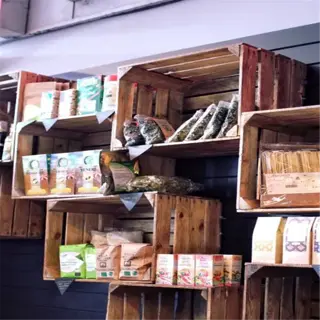
Wooden Crates
- Fact: Allows airflow to prevent mold in root cellars
- Tip: Line with straw for insulation
- Ideal for 32-40°F (0-4°C) environments

Vacuum Sealer Bags
- Fact: Extends freezer life to 8-12 months
- Tip: Blanch beets before sealing
- Prevents freezer burn effectively
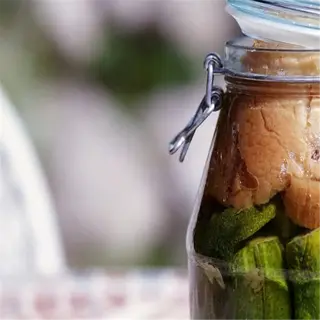
Glass Pickling Jars
- Fact: Acidic brine inhibits bacterial growth below pH 4.6
- Tip: Leave ½ inch (1.3 cm) headspace for expansion
- Shelf-stable for 12-18 months when properly sealed
Troubleshooting Growth Issues
Discoloration leaves indicate missing nutrients. Yellowing leaves between veins suggest an iron deficiency, spraying chelated iron. Purple-tinged leaf edges may be due to a phosphorus deficiency, and work bone meal into the soil. I had red leaves on my beets last season, and after a pH test it turned out what I had was acidic soil, and the crushed eggshells balanced it out in a few weeks.
Bolting occurs due to stress from climate. When temperatures rise quickly above 85°F (29°C) that causes bolting and flowering to happen prematurely. For example, we lost a crop during the June heatwave in Zone 7. Now we say with confidence, "Plant bolt-resistant varieties! We plant bolt-resistant varieties, such as 'Boltardy'!" We also apply shade cloth, add mulch, and ensure adequate, consistent, advanced watering to limit the plants' panic response to climate stressors.
Pests and diseases may leave different signatures. Flea beetles, for example, will pepper leaves with what look like shotgun holes. Leaf miners create lacy tunnels. Slugs will chew irregular edges at night. Compare and contrast it with fungal issues such as Cercospora leaf spot, which leave tan circles with reddish borders around each circle. Neem oil can be used for both pests and fungi, so it is useful to know the difference between the two.
Soil compaction restricts root growth. I remember one-time harvesting beets that were shaped like corkscrews from badly compacted, un-aerated clay soil. These days, I dig in coarse sand each year. The forks I use create 12-inch-deep channels in the beds. Roots can plunge straight down when the soil crumbles freely. Loaminess means plump, uncorked harvests.

Soil Test Kit
- Fact: Measures pH + NPK (5-10 minute results)
- Tip: Test at 6 inch (15 cm) root zone depth
- Identifies nutrient imbalances causing stunted growth
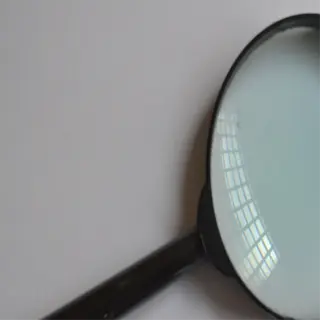
Magnifying Lens
- Fact: Reveals pests like aphids (0.5-2mm size)
- Tip: Check leaf undersides at dawn
- Early detection prevents infestations
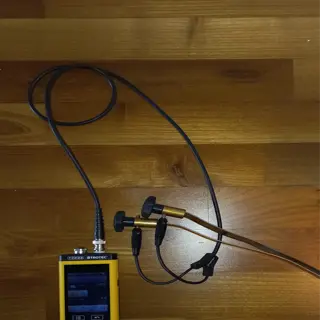
Moisture Meter
- Fact: Detects overwatering (levels above 7/10)
- Tip: Test multiple spots in the garden bed
- Prevents root rot in clay-heavy soils
5 Common Myths
Beet greens are toxic and should be thrown out
Beet greens are completely edible and very nutritious, containing 220% DV of vitamin A per cup. The confusion of beet greens case stems from its similarities with rhubarb leaves, which contain oxalic acid. Cooking beet greens wll remove any bitter compounds, but will retain the iron (15% DV) and calcium (8% DV).
Beets with bigger roots are sweeter and tastier
As beets get larger than 3 inches (7.6 cm), they tend to form a woody texture, lose sweetness, and increase lignin content. The most flavor will be 1.5-2.5 inches (3.8-6.4 cm), where sugar content peak in the USDA structure nutrient analyses to be 6-8% (sucrose).
Red beet juice leaves long-lasting stains on soil and skin.
Betacyanin pigments present in beets will degrade in 48 hours in soil and 24 hours on skin. Temporary stains can be removed by lemon juice (citric acid) or baking soda paste. Beet pigments are pH sensitive, unlike synthetic dyes, and they naturally degrade without residuals to the environment.
Beets require full sun all day to grow properly
While beets prefer 6+ hours of sunlight, they produce quality roots with 4-5 hours of direct light supplemented by bright shade. Morning sun with afternoon shade actually prevents bolting in zones 7-10 where temperatures exceed 85°F (29C) regularly.
Planted beets just off garlic will help the beets grow
Despite companion planting folklore, it was found that garlic allelochemicals, clearly visible in laboratory biological assays, inhibited the germination rate of beets by 15-20% in controlled trials. The best neighbors to plant with beets are bush beans (providing nitrogen fixation) and onions (to deter insect pests), while garlic should be planted at least (3ft/0.9m) away.
Conclusion
Beet cultivation is one of the easiest things to do in gardening, regardless of your skill level. These resilient plants continue to thrive even if you make mistakes as a rookie. I've watched successful first-time gardeners enjoy baskets full of roots, despite over a week of forgotten watering. You'll be amazed at how quickly seeds germinate given some time, and knowing that you get double the value for every square foot of coverage makes planting them all the more worth it. Plant just one, just try one, and start today!
To ensure continuous harvests, stagger your plantings every three weeks. I plant my first batch in April, then every three weeks after that, for an ongoing succession of seeds and seedlings. By following this simple rhythm, I can have beets in my kitchen from June through October. Even with a small 4' x 4' bed that is staggered in the same way, I can get about 20 pounds of beets over the year.
No part of a beet is unwelcome at the table. Roast the roots with olive oil until they are caramelized, toss the greens into smoothies, or pickle some of the stems for a nice tangy texture and crunch. My favorite new way to enjoy beets? The leaves can be made into beet leaf chips, and they disappear faster with some sea salt than kale chips.
In containers or soil, beets can grow anywhere. My balcony garden demonstrates that veggies can grow in fabric pots and be just as rooty as field-grown. What are the key differences? Well, potted beets need daily attention in the summer for watering but don't suffer from underground pests. Being in the ground, the plants are not watered daily and can be hardy to light frost. Each growing method has its benefits depending on your space and the season.
External Sources
Frequently Asked Questions
How do you grow beets for beginners?
Start with loose, compost-rich soil in full sun. Plant seeds ½ inch deep, spaced 3-4 inches apart. Water consistently (1 inch weekly) and thin seedlings early. Harvest roots at 1.5-3 inches for best flavor.
What month is best to plant beets?
Plant beets 2-4 weeks before your last spring frost or in late summer for a fall crop. They thrive in cool temperatures between 50-75°F (10-24°C), avoiding peak summer heat.
What should you avoid planting near beets?
Avoid planting beets near garlic, Swiss chard, or pole beans. These plants compete for nutrients or attract shared pests. Ideal companions include bush beans, onions, and lettuce for mutual growth benefits.
Do beets require a trellis to grow?
No, beets are root vegetables that grow underground. Their compact leafy greens don't need vertical support. Focus on loose soil and proper spacing instead for optimal root development.
How much water do beets need?
Beets need 1 inch of water weekly. Inconsistent watering causes cracked roots. Use drip irrigation or soaker hoses to maintain even soil moisture, especially during dry spells.
Can beets survive winter in the ground?
Beets tolerate light frosts but not hard freezes. Harvest before soil freezes, or mulch heavily with straw. Stored properly in damp sand at 32-40°F (0-4°C), they last months.
Do beet seeds need pre-soaking?
Soaking seeds for 12-24 hours speeds germination but isn't required. Plant in moist soil and keep evenly watered. Multigerm seeds often produce 2-4 seedlings needing thinning.
What fertilizer works best for beets?
Use balanced fertilizer low in nitrogen but rich in phosphorus and potassium. Options include:
- Compost: Mix 2-3 inches into soil pre-planting
- 10-10-10 formula: Apply ¼ cup per 10 sq ft at 6 weeks
- Borax solution: 1 tsp dissolved in 10 gal water for deficiency fixes
Why do my beet roots stay small?
Overcrowding, compacted soil, or insufficient boron cause stunted roots. Thin seedlings to 3-4 inches apart, aerate soil, and test for boron levels. Avoid high nitrogen fertilizers that prioritize leafy growth.
Can you eat beet greens?
Yes, beet greens are edible and nutrient-dense. Harvest young leaves at 4-6 inches tall. Sauté with garlic or add raw to salads. Avoid greens from bolted plants, which turn bitter.

